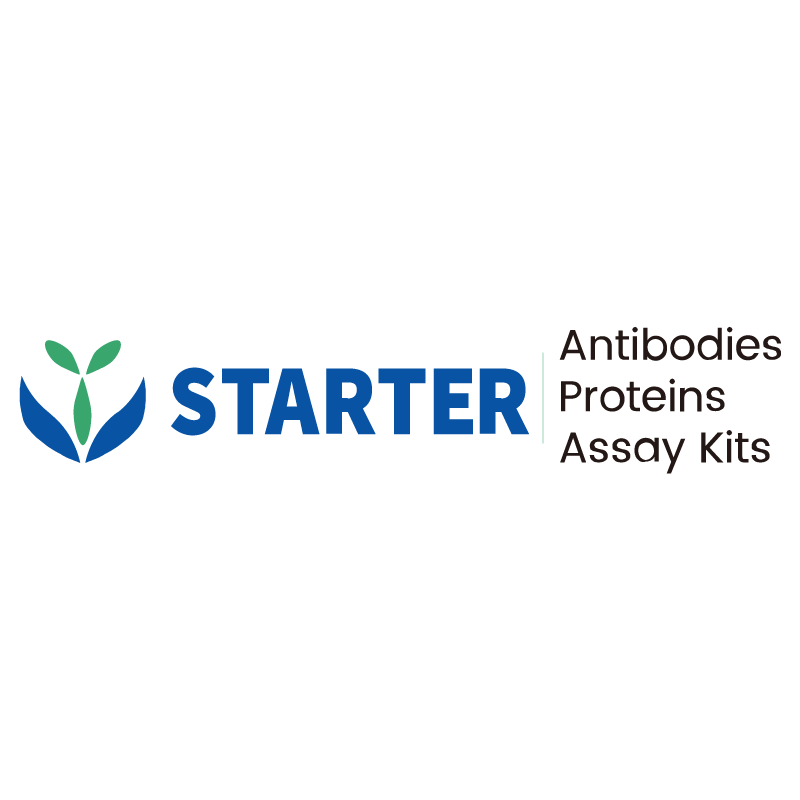WB result of mTOR Recombinant Rabbit mAb
Primary antibody: mTOR Recombinant Rabbit mAb at 1/1000 dilution
Lane 1: K562 whole cell lysate 20 µg
Lane 2: Raji whole cell lysate 20 µg
Lane 3: HeLa whole cell lysate 20 µg
Lane 4: HepG2 whole cell lysate 20 µg
Lane 5: MCF7 whole cell lysate 20 µg
Secondary antibody: Goat Anti-rabbit IgG, (H+L), HRP conjugated at 1/10000 dilution
Predicted MW: 289 kDa
Observed MW: 290 kDa
Product Details
Product Details
Product Specification
| Host | Rabbit |
| Antigen | mTOR |
| Synonyms | Serine/threonine-protein kinase mTOR; FK506-binding protein 12-rapamycin complex-associated protein 1; FKBP12-rapamycin complex-associated protein; Mammalian target of rapamycin (mTOR); Mechanistic target of rapamycin; Rapamycin and FKBP12 target 1; Rapamycin target protein 1; Tyrosine-protein kinase mTOR; MTOR; FRAP; FRAP1; FRAP2; RAFT1; RAPT1 |
| Immunogen | Synthetic Peptide |
| Accession | P42345 |
| Clone Number | S-698-228 |
| Antibody Type | Recombinant mAb |
| Isotype | IgG |
| Application | WB, IHC-P, ICC |
| Reactivity | Hu, Ms, Rt |
| Positive Sample | K562, Raji, HeLa, HepG2, MCF7, C2C12, C6 |
| Purification | Protein A |
| Concentration | 0.5 mg/ml |
| Conjugation | Unconjugated |
| Physical Appearance | Liquid |
| Storage Buffer | PBS, 40% Glycerol, 0.05% BSA, 0.03% Proclin 300 |
| Stability & Storage | 12 months from date of receipt / reconstitution, -20 °C as supplied |
Dilution
| application | dilution | species |
| WB | 1:1000 | Hu, Ms, Rt |
| IHC-P | 1:250 | Hu |
| ICC | 1:500 | Hu |
Background
The mammalian target of rapamycin (mTOR) protein is a crucial serine/threonine kinase that plays a central role in regulating various cellular processes such as cell growth, proliferation, survival, and metabolism. It integrates signals from multiple pathways including nutrient availability, growth factors, and energy status to control protein synthesis, lipid metabolism, and autophagy. mTOR exists in two distinct complexes: mTORC1 and mTORC2. mTORC1, which is sensitive to rapamycin, is primarily involved in promoting protein synthesis by phosphorylating key substrates like S6K and 4E-BP1, thereby driving cell growth and division. It also inhibits autophagy when nutrients are abundant. mTORC2, on the other hand, regulates the actin cytoskeleton and cell survival by phosphorylating proteins such as Akt and PKC. Dysregulation of mTOR signaling is implicated in numerous diseases including cancer, diabetes, and neurodegenerative disorders, making it an important target for therapeutic interventions.
Picture
Picture
Western Blot
WB result of mTOR Recombinant Rabbit mAb
Primary antibody: mTOR Recombinant Rabbit mAb at 1/1000 dilution
Lane 1: C2C12 whole cell lysate 20 µg
Secondary antibody: Goat Anti-rabbit IgG, (H+L), HRP conjugated at 1/10000 dilution
Predicted MW: 289 kDa
Observed MW: 280 kDa
WB result of mTOR Recombinant Rabbit mAb
Primary antibody: mTOR Recombinant Rabbit mAb at 1/1000 dilution
Lane 1: C6 whole cell lysate 20 µg
Secondary antibody: Goat Anti-rabbit IgG, (H+L), HRP conjugated at 1/10000 dilution
Predicted MW: 289 kDa
Observed MW: 290 kDa
Immunohistochemistry
IHC shows positive staining in paraffin-embedded human colon. Anti-mTOR antibody was used at 1/250 dilution, followed by a HRP Polymer for Mouse & Rabbit IgG (ready to use). Counterstained with hematoxylin. Heat mediated antigen retrieval with Tris/EDTA buffer pH9.0 was performed before commencing with IHC staining protocol.
IHC shows positive staining in paraffin-embedded human stomach. Anti-mTOR antibody was used at 1/250 dilution, followed by a HRP Polymer for Mouse & Rabbit IgG (ready to use). Counterstained with hematoxylin. Heat mediated antigen retrieval with Tris/EDTA buffer pH9.0 was performed before commencing with IHC staining protocol.
IHC shows positive staining in paraffin-embedded human testis. Anti-mTOR antibody was used at 1/250 dilution, followed by a HRP Polymer for Mouse & Rabbit IgG (ready to use). Counterstained with hematoxylin. Heat mediated antigen retrieval with Tris/EDTA buffer pH9.0 was performed before commencing with IHC staining protocol.
IHC shows positive staining in paraffin-embedded human cervical squamous cell carcinoma. Anti-mTOR antibody was used at 1/250 dilution, followed by a HRP Polymer for Mouse & Rabbit IgG (ready to use). Counterstained with hematoxylin. Heat mediated antigen retrieval with Tris/EDTA buffer pH9.0 was performed before commencing with IHC staining protocol.
IHC shows positive staining in paraffin-embedded human lung adneocarcioma. Anti-mTOR antibody was used at 1/250 dilution, followed by a HRP Polymer for Mouse & Rabbit IgG (ready to use). Counterstained with hematoxylin. Heat mediated antigen retrieval with Tris/EDTA buffer pH9.0 was performed before commencing with IHC staining protocol.
IHC shows positive staining in paraffin-embedded human ovarian carcinoma. Anti-mTOR antibody was used at 1/250 dilution, followed by a HRP Polymer for Mouse & Rabbit IgG (ready to use). Counterstained with hematoxylin. Heat mediated antigen retrieval with Tris/EDTA buffer pH9.0 was performed before commencing with IHC staining protocol.
IHC shows positive staining in paraffin-embedded human thyroid carcinoma. Anti-mTOR antibody was used at 1/250 dilution, followed by a HRP Polymer for Mouse & Rabbit IgG (ready to use). Counterstained with hematoxylin. Heat mediated antigen retrieval with Tris/EDTA buffer pH9.0 was performed before commencing with IHC staining protocol.
Immunocytochemistry
ICC shows positive staining in HeLa cells. Anti- mTOR antibody was used at 1/500 dilution (Green) and incubated overnight at 4°C. Goat polyclonal Antibody to Rabbit IgG - H&L (Alexa Fluor® 488) was used as secondary antibody at 1/1000 dilution. The cells were fixed with 4% PFA and permeabilized with 0.1% PBS-Triton X-100. Nuclei were counterstained with DAPI (Blue). Counterstain with tubulin (Red).


